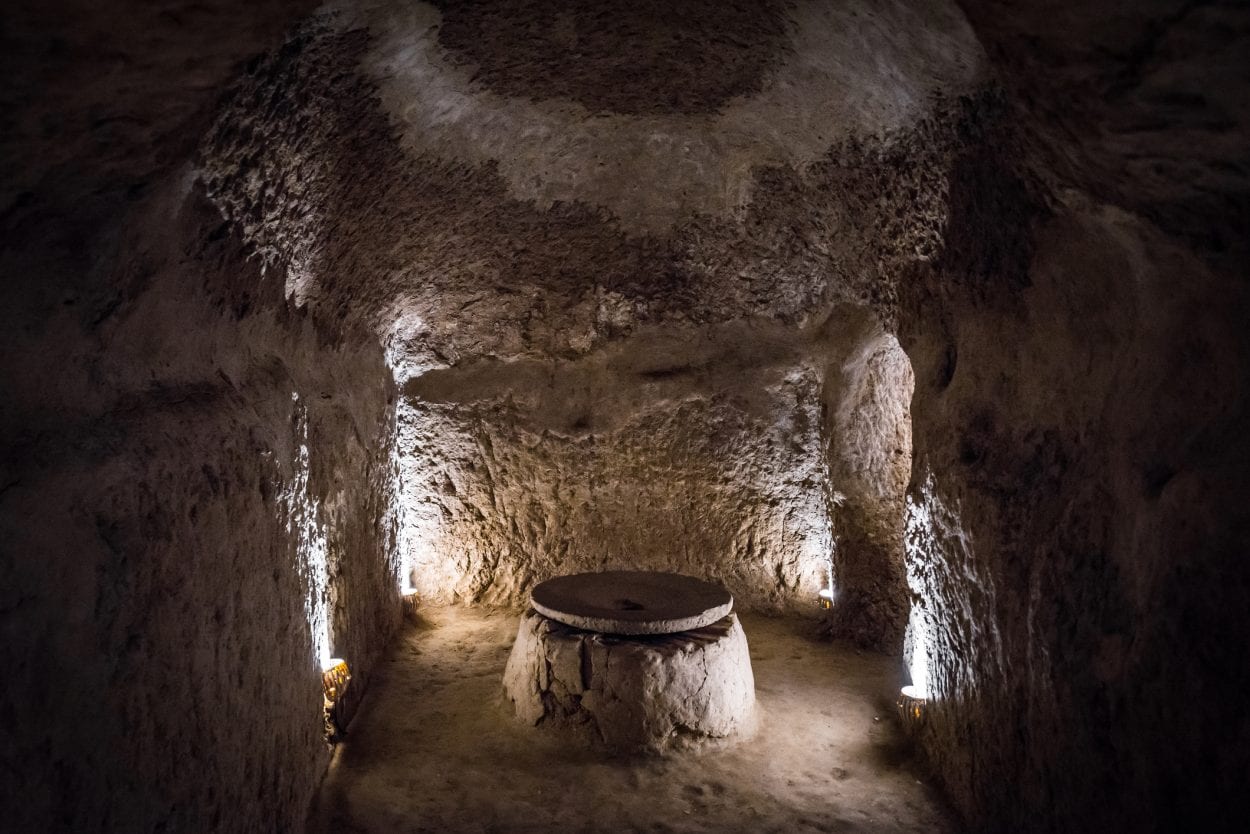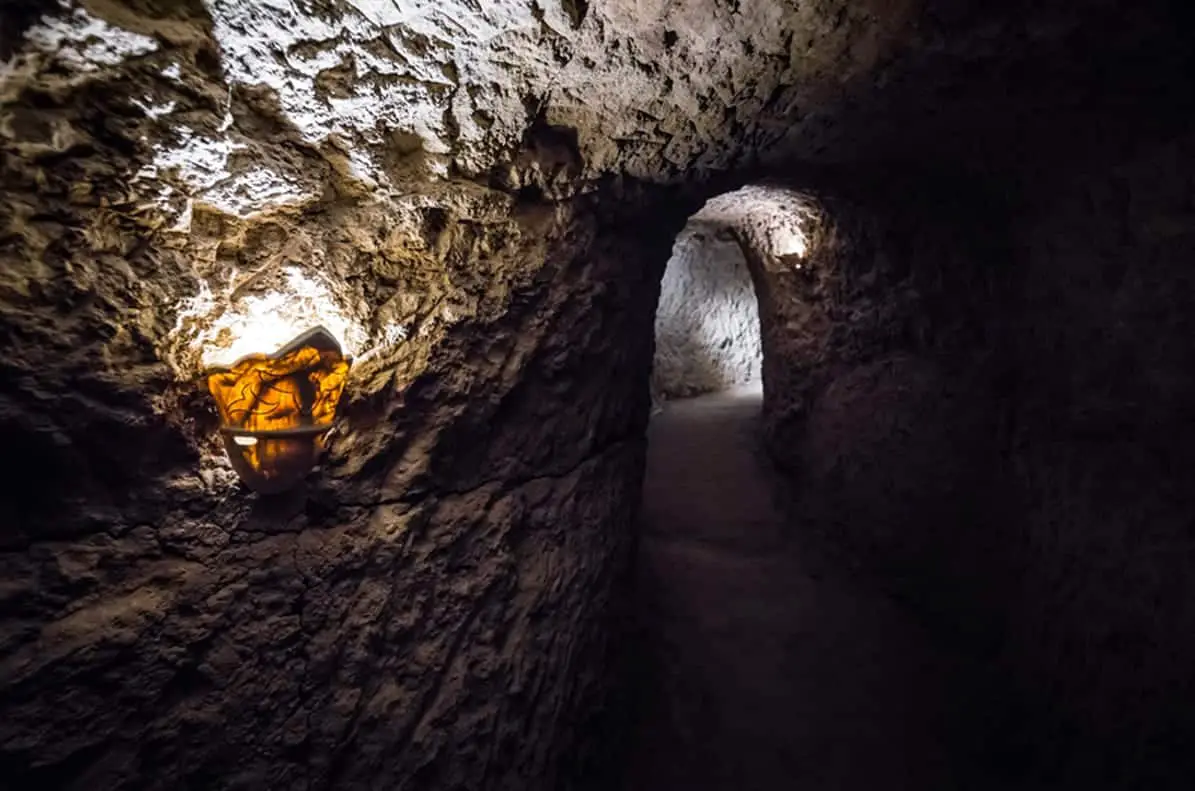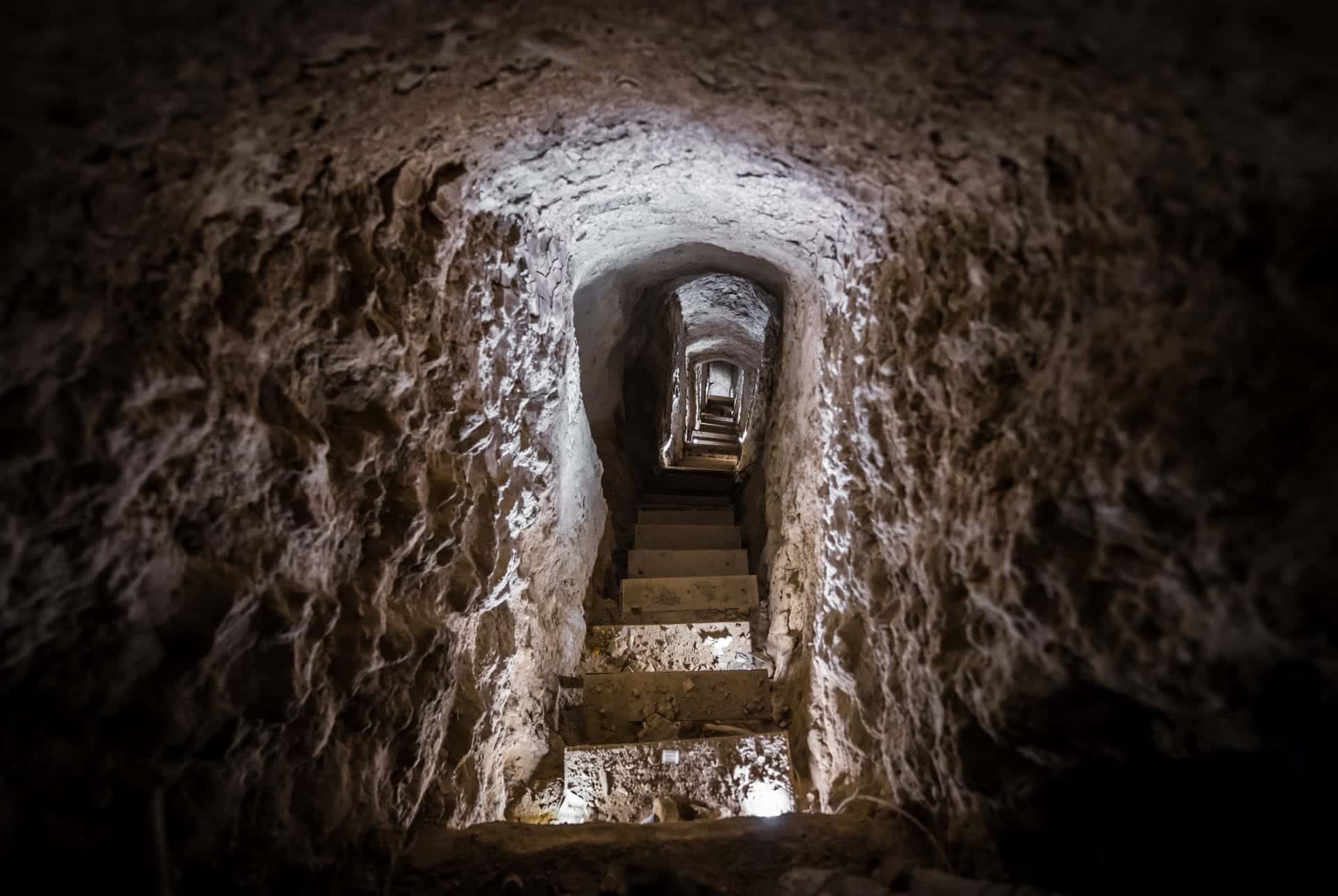Noushabed, also called Oeei or Ouyim is an ancient subterranean city, built beneath the small town of Nushabad in present-day Iran.
The earliest parts of the city was constructed sometime during the Sassanid period between AD 224 to 651 and continued to be excavated during the post-Islamic era, with evidence of occupation lasting until the Qajar dynasty.
Archaeologists have discovered human remains, earthen vessels, and stone instruments from the Sassanian, Ilkhanid, and Safavid periods, suggesting almost continuous use for many centuries.
Researchers have identified three distinct levels reaching a depth of 16 metres, and a complex network of interconnected tunnels and chambers covering an area of 3.7 acres. The different levels were connected through vertical and horizontal channels that also functioned as a ventilation system allowing the free flow of air throughout the substructure.

The city was accessed via short wells or narrow corridors, hidden in houses (some hidden behind ovens), a mosque, the Sizan castle, water channels and qanats, or in obscured locations outside the original town boundary. The city was so well hidden, that Noushabad was only rediscovered when a town resident stumbled across the tunnels whilst digging a sewage ditch on their property.
Archaeologists suggest that the city served as a concealed refuge against invaders, with portals blocked using large millstones to prevent access. The tunnel network also rises and falls across multiple levels leading to various dead ends, creating a complex labyrinth designed to confuse intruders.

While traveling inside the substructure, the inhabitants would need to travel in a single-file line due to the narrow tunnels. The first person in the line would light the wall-mounted torches, while the last person in line would turn off each successive torch plunging the tunnels into darkness.
Families seeking shelter had their own individual chambers with carved niches that functioned as benches or beds, all supported with water transported through pipes and qanats, storage spaces, and toilets, allowing the inhabitants to comfortably remain underground for long periods.
Header Image Credit : Dreamstime License







